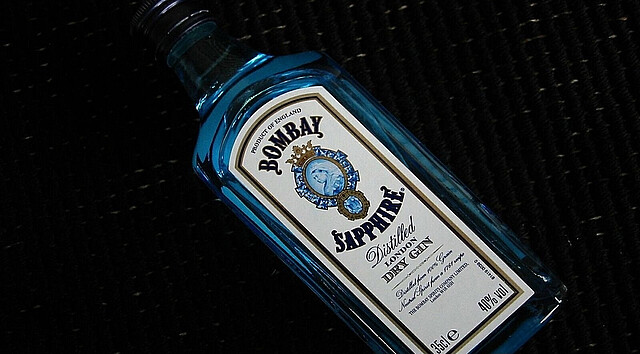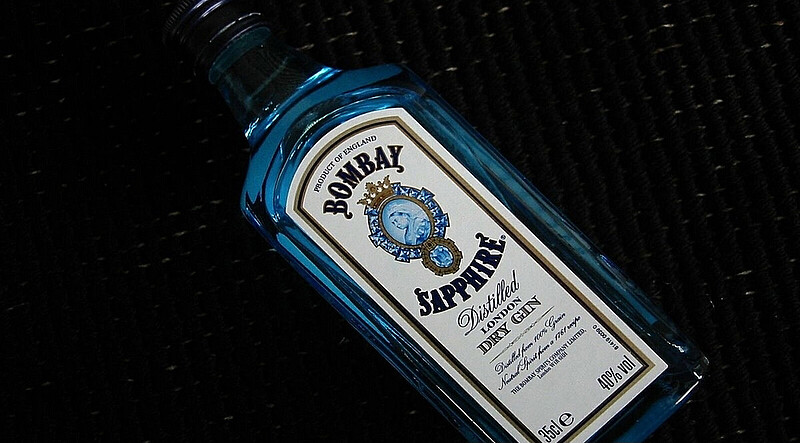The Empire Sips Back
Henry David Thoreau, the man who has written more pages on raising beans than I ever want to have to admit reading in my own short life-span, would not approve. He would not approve of the hipster movement which has appropriated his ethos. With his ideals of simple living, a diet of wild fruits and garden vegetables, he would not approve of the unashamed foodism endemic to my home island, Tasmania. He would certainly not approve of the pale lilac sheen the Tasmanian bush pepper berry lends to the translucent nectar of the gods in my hand. And yet, his writing has proven to be the boiler-plate for the conception of the next generation of colonial gins in Tasmania and across the pond in Canada (for instance, in the Ungave Bay gin). The difference between Britain’s classic gin of empire, and its colonial replies would be funny if it weren’t so trite.
There is something startling about seeing the sapphire blue of every self-respecting bar’s standard gin nested amongst the clear purity and translucent yellow of its colonial cousins. With its iconic image of Queen Victoria framed by the royal jewels, Bombay Sapphire is the gin most symbolic of the British Empire. The story telling on its label centres on the incorporation of botanicals from the furthest outreaches of the empire, combined into one product under the motherly eye of Victoria. The bust image of Victoria reminds the drinker of her role as a literal head of the empire, whilst the order of elements on the label reflect that same power structure. Crown and queen sit at the centre, circled by the brand name, a reminder of the most prominent outpost of the British Empire, Bombay. The frame around Victoria’s portrait shows sapphire settings reminiscent of the crown jewels, connecting thesapphire in the title with the wealth of England, and thus showing the raw materials of India to have value only once cut and set by Britain. The choice of an emerald cut for the stones framing Victoria brings in a masculine element which symbolises the industrial power of Victorian Britain. In contrast, Bombay is presented in a softly rounded feminine font, a font which reflects the female colonial landscape raped and divested of its jewels. Below this, the raw material spoils taken from this land are listed in the form of botanicals, devoid of cultural context or even image. The implication is clear: these raw ingredients are transformed into a beverage only by dint of the might of London.
Across the seas, the Lark Distillery’s Forty Spotted foregrounds local botanicals.This gin provides an alternative female figure head, a ‘Romantic’ modelled on Henry David Thoreau, who is herself subject to her surroundings. Clare is the kind of plain girl who you are supposed to assume loves adventure and sophisticated old films. She faces the camera, eyes upturned, binoculars poised. The caption on the label reads: “Never stop searching”, and the consumer is taken on a journey interspersed with images of the Tasmanian wilderness:
“As she turned her back on civilisation, Clare pondered the parting words of her mentor, Professor Quadragintus: ‚Things that are rare, Miss Pilkington, are by their very nature not easily found. But mark my words – they are worth seeking.‘ Clare bathed in the sound of moving water. Water that had travelled thousands of kilometres across the vast Southern Ocean before gathering in black clouds to fall as rain on this green, mountainous island. Soon it became all too obvious that she had been this way before. After days of trudging through the wilderness, she was back where she started. Lost, but never defeated. Could it really be? Clare trembled with anticipation. After all she had been through, it could scarcely be feasible. She had finally discovered her first clue – the elusive Tasmania aromatica. ‚You never fail until you stop trying‘. With this adage in mind, Clare prepared herself for another day of searching. Another day of hope and anticipation. Clare knew with a certainty that there would be more journeys to undertake. More questions to be answered. More secrets to unravel. More rarities to be uncovered.” (Forty Spotted Gin information booklet attached to bottle)
While the story-telling shows the kind of exploration commonly associated with the semiotic violence of colonial mapping, there are some not-so subtle differences. Professor Quadragintus is none other than the Pardolotus Quadragintus – the forty spotted pardolote, Tasmania’s rarest bird and the name’s sake of the Forty Spotted gin. The protagonist is responding to a literary ‚call of the wild‘. Her reading of the landscape is framed by geographical forces, the history and routes of the water. Her experience of the wilderness, while one of discovery, is one of self-discovery first and foremost. The wilderness is the source of her inspiration, the kind of certainty the Boston transcendentalists also found in experiences of the wild. This call to discovery however, combines the desire to be captured by the landscape with a more violent desire to harvest and capture its beauty. The result is an uncomfortable welding to two diametrically opposing ways of viewing the landscape: discovery as ownership, and a deep understanding of the self in the landscape.
What is celebrated is a sense of being in the wilderness, of a wildness of heart, rather than the cold industry of empire. At the same time however, there is a sense of infinite deferral, a (post)colonial wildness which defers understanding, which is always just out of reach, undermining the authenticity of these expressions of love and belonging in the island’s wild landscapes. This unease stems perhaps from the implicit understanding that we have packaged and sold our wilderness, and continue to sell our uniqueness. But it is impossible not to see this particular gin-bottle form of our sluttery as a giant finger…fingered glove thrown in the face of the empire – because we took its most ubiquitous symbol and we didn’t ‚make it new‘, we made it better.
https://www.youtube.com/channel/UCsULC3jm1Z_n2CosjUtvBsA (abgerufen am 26. Juli 2018)

